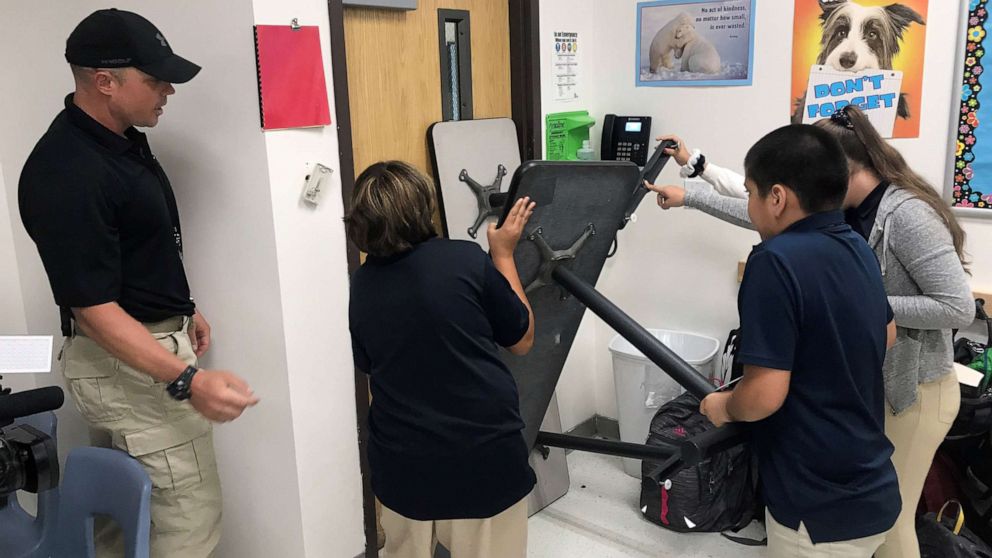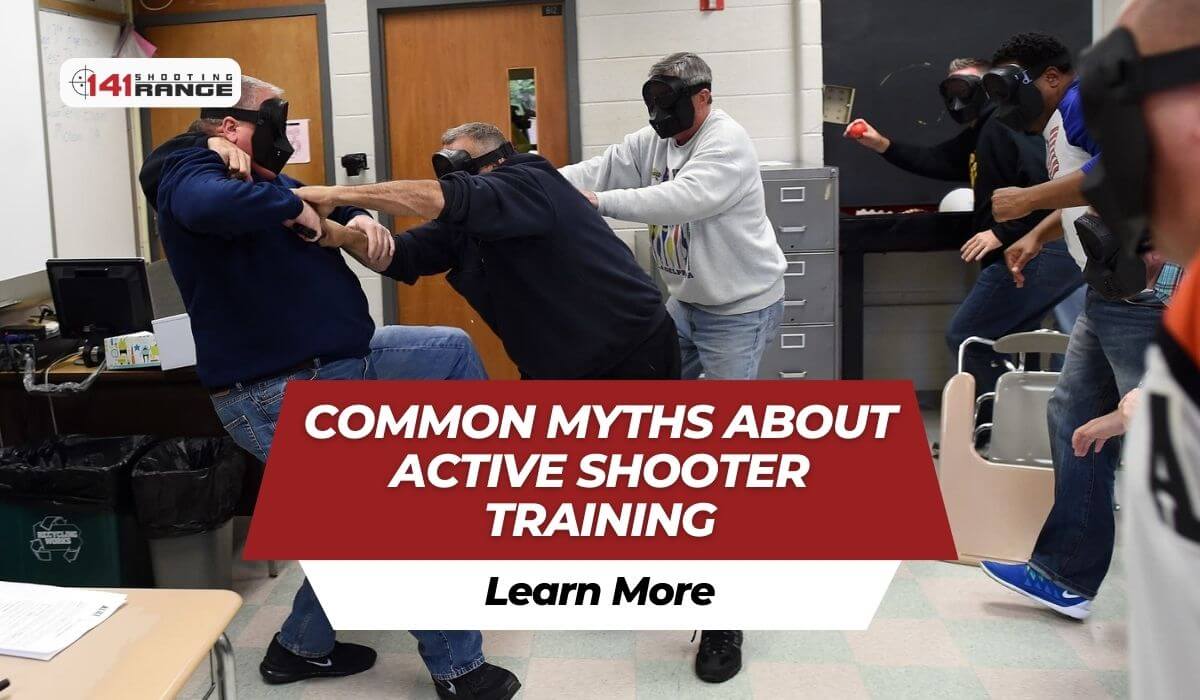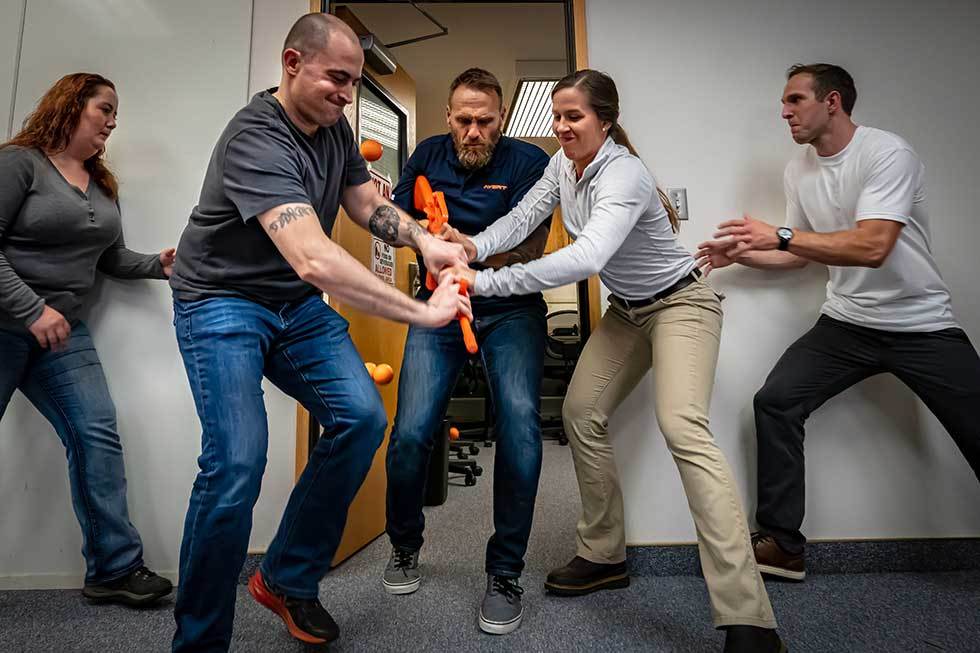The Relevance of Active Shooter Training in High-Risk Environments
The Relevance of Active Shooter Training in High-Risk Environments
Blog Article
The Essential Duty of Energetic Shooter Training in Enhancing Emergency Response Strategies in Numerous Atmospheres
Active shooter training has become a fundamental part in refining emergency situation action methods across diverse settings, from schools to business atmospheres. By gearing up individuals with tailored expertise and abilities, these programs not just prepare individuals for prospective dilemmas however also foster a culture of awareness and collaboration. Nevertheless, the efficiency of such training pivots on various variables, including the specific context in which it is applied and the continuous dedication to renovation. Exploring these measurements exposes essential understandings that could dramatically influence preparedness and reaction end results in the face of alarming threats.
Value of Active Shooter Training
In a period marked by raising worries over public safety, the relevance of active shooter training can not be overstated. As incidents of weapon violence in public rooms proceed to climb, organizations throughout different sectorsâEUR" universities, offices, and public venuesâEUR" are acknowledging the necessity of preparing their personnel and areas for such emergency situations. Energetic shooter training gears up people with vital skills and knowledge to react successfully in dangerous scenarios, possibly minimizing casualties and saving lives.
The training not only concentrates on prompt feedback activities, such as emptying and sheltering in position, but additionally cultivates a society of understanding and preparedness. By taking part in realistic simulations and conversations, individuals can determine prospective vulnerabilities within their environment and develop techniques for mitigating dangers. In addition, such training boosts interaction and control amongst group participants and very first responders, ensuring a much more unified technique throughout situations.

Secret Elements of Effective Training
Reliable active shooter training consists of several vital components that improve preparedness and action capabilities. Sensible scenario-based simulations are essential. These exercises submerse individuals in high-stress circumstances that imitate potential energetic shooter events, allowing them to practice decision-making and physical feedbacks under stress.
Furthermore, training needs to consist of a complete understanding of interaction protocols. Participants should be fluent in exactly how to relay important info to police and fellow individuals during a case. This includes making use of emergency situation informs and comprehending the chain of command.
An additional important part is the incorporation of mental health and wellness awareness. Training should attend to the psychological influence of energetic shooter situations, outfitting participants with coping strategies and resources to sustain their psychological health post-incident.
In addition, routine correspondence course are crucial to ensure that skills stay sharp and understanding is updated. This continual education enhances the significance of readiness and cultivates a society of safety and security within companies.
Training for Different Settings
Energetic shooter training should be customized to the certain atmospheres in which people run, as each setting presents unique obstacles and dynamics. As an example, training in a corporate workplace will vary substantially from that in a school, shopping center, or health care facility. Each setting requires a customized strategy that Look At This takes into consideration aspects such as layout, populace density, and offered getaway paths.
In universities, training programs ought to stress lockdown procedures, interaction methods with legislation enforcement, and strategies for securing students. On the other hand, in corporate settings, training might focus on discharge techniques, identifying questionable actions, and utilizing available resources for protection or shelter-in-place situations.
Furthermore, public places like shopping centers or showing off events require extensive group management techniques, with a focus on quick response sychronisation among security workers and regional police.
In health care settings, training has to address certain susceptabilities, such as the presence of individuals who might need prompt support. By recognizing the distinct features of each atmosphere, organizations can create efficient training modules that improve preparedness and boost overall safety and security, making certain that people are outfitted to react properly in varied crisis circumstances.

Structure a Culture of Understanding
Creating a society of recognition is essential to enhancing precaution in any setting, as it equips people to acknowledge potential hazards and react proactively. This culture requires continuous education, open communication, and the integration of security methods right into everyday regimens.
Organizations ought to focus on active shooter training as part of their overarching safety and security method, guaranteeing that all employees understand the details dangers related to their setting. Regular training sessions grow watchfulness and knowledge with emergency procedures, motivating individuals to continue to be alert to uncommon habits or situations.
Furthermore, promoting a society of awareness entails creating an atmosphere where reporting dubious activity is both urged and stabilized. active shooter training. Workers must feel comfortable sharing their problems without worry of revenge. This can be achieved with clear channels of interaction and supportive management
In addition, participating in area partnerships can enhance awareness beyond business boundaries, promoting a click here to read shared obligation for security. Campaigns such as workshops, drills, and educational sessions can even more boost collective alertness. Ultimately, developing a society of recognition not just prepares individuals for possible crises but additionally reinforces the overall durability of the company versus threats.
Evaluating Training Efficiency
While routine training sessions are vital for readiness, reviewing their efficiency is just as important to make certain that personnel are furnished with the necessary skills and expertise to respond properly in the occasion of an active shooter circumstance. Analysis processes should include both qualitative and quantitative analyses to determine the influence of training on reaction capabilities.
Studies and responses from participants can offer useful understandings right into the training's relevance and applicability. Additionally, conducting functional drills and simulations enables companies to observe real-time decision-making and team effort under pressure. Examining the end results of these workouts helps determine staminas and areas for enhancement.

Including stakeholders, consisting of regulation enforcement and emergency responders, in the examination procedure can boost reliability and supply a thorough viewpoint on training efficacy (active shooter training). Ultimately, a methodical examination technique makes sure that energetic shooter training continues to be an essential part of an organization's emergency response strategy, fostering a safer environment for all
Conclusion
Active shooter training is linked here essential in fortifying emergency response strategies across varied settings. By outfitting people with the essential abilities and understanding, such training improves preparedness and coordination during crucial events. Tailored methods for different settings make certain that details vulnerabilities are dealt with, promoting a culture of recognition and continuous education. Inevitably, the implementation and evaluation of efficient training programs contribute substantially to mitigating the impact of active shooter situations, thereby protecting lives and improving community durability.
Report this page